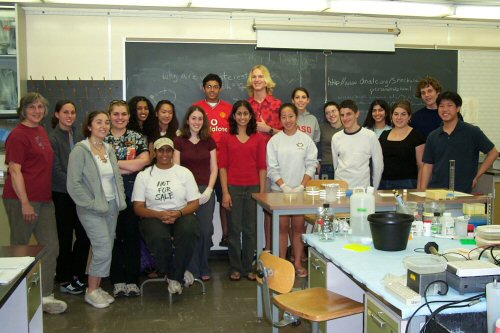CLONING A VIRULENCE GENE FROM BORDETELLA AVIUM
Molly Baum, Alice Chiang, Joshua Cook, Christina Crum, Karina Lam, Meghana Limaye, Varun Ponmudi, Susan Putnins, Thomas Riemschneider, Mirat Shah, Monica Thanawala
Advisor: Dr. Louise Temple
Assistant: Karen Riesenburger
Consultants: Jen Brady, Angella Dorsey-Oresto, Gene Gillespie,
Mary Gomes, Matt Hui, Kelly Prescott, Dr. Munju Tyagi
Bordetella avium (B. avium) causes bordetellosis, a disease similar
to whooping cough, in turkeys and other birds. B. avium has proteins
on its outer membrane called fimbriae which attach to the cilia in the
turkey’s trachea. The aim of this project was to isolate the fimbrial
genes in order to synthesize fimbrial proteins and to eventually create
a component vaccine. Polymerase chain reaction was performed on four
different B. avium genes expected to code for fimbriae: fimA, fim1, fim2,
and fim3. Three genes were successfully amplified, and were subsequently
ligated into the cloning vector, pET151/D- TOPO. The ligated plasmids
were then transformed into Escherichia coli (E. coli) to allow the plasmids
to replicate. The plasmids were isolated and examined, and although electrophoresis
did not prove that ligation had occurred, the E. coli were cultivated
to synthesize the fimbrial protein from the plasmid DNA. Protein gel
analysis showed that these cells did not contain proteins of the expected
size, which leads to the conclusion that the fimbriae genes were not
properly expressed. Future research should continue attempts to synthesize
the fimbriae protein because this is an essential step to developing
a working component vaccine.
Paper
(Acrobat pdf file: 920 kb)
Presentation
(Acrobat pdf file: 1.3 Mb)
Team Project Picture (jpg: 301 kb)
Return to Team Projects
